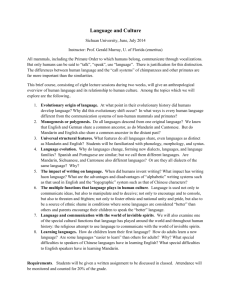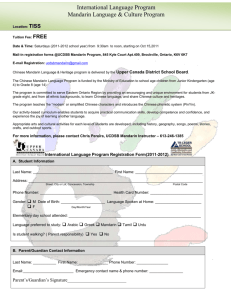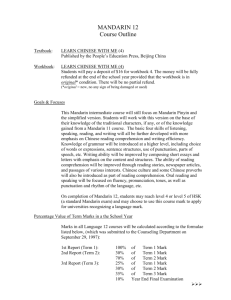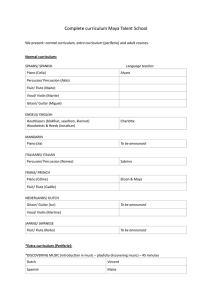MANDARINS
advertisement
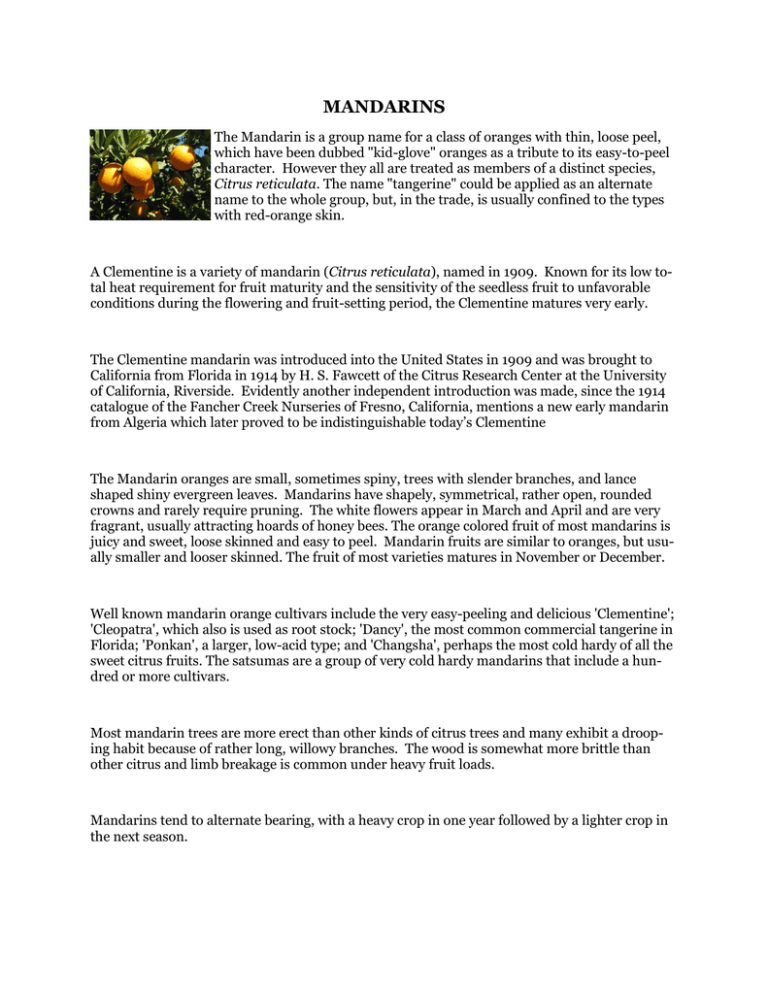
MANDARINS The Mandarin is a group name for a class of oranges with thin, loose peel, which have been dubbed "kid-glove" oranges as a tribute to its easy-to-peel character. However they all are treated as members of a distinct species, Citrus reticulata. The name "tangerine" could be applied as an alternate name to the whole group, but, in the trade, is usually confined to the types with red-orange skin. A Clementine is a variety of mandarin (Citrus reticulata), named in 1909. Known for its low total heat requirement for fruit maturity and the sensitivity of the seedless fruit to unfavorable conditions during the flowering and fruit-setting period, the Clementine matures very early. The Clementine mandarin was introduced into the United States in 1909 and was brought to California from Florida in 1914 by H. S. Fawcett of the Citrus Research Center at the University of California, Riverside. Evidently another independent introduction was made, since the 1914 catalogue of the Fancher Creek Nurseries of Fresno, California, mentions a new early mandarin from Algeria which later proved to be indistinguishable today’s Clementine The Mandarin oranges are small, sometimes spiny, trees with slender branches, and lance shaped shiny evergreen leaves. Mandarins have shapely, symmetrical, rather open, rounded crowns and rarely require pruning. The white flowers appear in March and April and are very fragrant, usually attracting hoards of honey bees. The orange colored fruit of most mandarins is juicy and sweet, loose skinned and easy to peel. Mandarin fruits are similar to oranges, but usually smaller and looser skinned. The fruit of most varieties matures in November or December. Well known mandarin orange cultivars include the very easy-peeling and delicious 'Clementine'; 'Cleopatra', which also is used as root stock; 'Dancy', the most common commercial tangerine in Florida; 'Ponkan', a larger, low-acid type; and 'Changsha', perhaps the most cold hardy of all the sweet citrus fruits. The satsumas are a group of very cold hardy mandarins that include a hundred or more cultivars. Most mandarin trees are more erect than other kinds of citrus trees and many exhibit a drooping habit because of rather long, willowy branches. The wood is somewhat more brittle than other citrus and limb breakage is common under heavy fruit loads. Mandarins tend to alternate bearing, with a heavy crop in one year followed by a lighter crop in the next season. Tangerines and mandarins are sometimes mistakenly referred to as the same fruit but tangerines are actually a subgroup of mandarins. Therefore, all tangerines are classified as a type of mandarin orange, but not all mandarin oranges are tangerines. The primary difference between the two species is their skin color. The tangerine has a darker reddish- orange skin while the mandarin is lighter orange in color. The tangerine is the most commonly available mandarin orange. The tangerine, the name given to a variety of mandarin, was an American invention coined to designate the fruit that passed mainly through the Moroccan port of Tangiers. It was the Portuguese, through their colonies in Asia, who introduced the fruit to Europe. The word “mandarin” can refer to the citrus fruit, a high-ranking Chinese official or the language spoken in China. Nonetheless, it’s not a Chinese word. The giant swallowtail butterfly, one of North America's largest and most spectacular butterflies, relies solely on plants in the citrus family for larval food. The caterpillar, called an "orange dog" prefers cultivars of mandarin oranges. Like most citrus cultivars, mandarin trees are bud grafted onto seedlings of the same or a closely related root stock species. Mandarin oranges, with their glossy dark green leaves, fragrant springtime blossoms, and bright orange fruits, are beautiful little specimen trees in the home landscape. They may need protection from temperatures below 24ºF for the first couple of winters, if temperatures drop that low in the Yuma area. For increased protection from the cold, plant tender trees on the south side of a building. Kurt Nolte is an area agriculture agent with the Yuma County Cooperative Extension. He can be reached at 928-726-3904.
